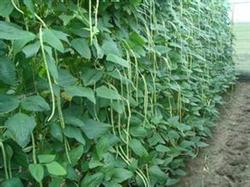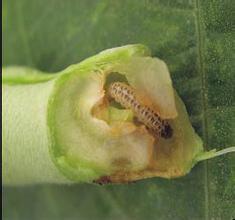Beans should also be pruned.

There are many vegetable farmers planting beans, but most farmers rarely prune according to the previous experience of planting open field beans, resulting in messy branches, mutual shade, reduced flower bud differentiation of lateral branches, low flowering and pod setting rate, low yield in the middle and later stage, and serious "rest" in the high temperature season. the benefit is reduced. So, how should vegetable farmers prune beans? First of all, the lateral buds from the base of the beans to 50 cm from the ground should be erased in time because the beans are longer, and the beans growing at the bottom of the plant will touch the ground and are prone to disease or be bitten by underground pests, affecting the growth of beans. At the same time, the lower lateral buds will compete with the main branch for nutrition, affecting the growth of the main branch. When the lower lateral bud grows to 2-3 cm, it should be removed in time to improve the ventilation and light transmittance of the base of the plant, promote the sturdiness of the main branch, blossom and bear pods earlier. Secondly, in the process of pod setting, attention should be paid to the tip of the group, and the side branches produced on the main branch should be removed when flower buds and leaf buds sprout in the axils of the middle and upper leaves of the main vine at the same time. When leaf axils only germinate leaf buds but not flower buds, coring can be carried out when the lateral branches grow to 2 leaves, which can also promote the formation of an inflorescence on the lateral branches, thus increasing the number of flower buds and increasing the pod setting rate. Thirdly, the main branch should be coring in time when the main branch grows on the steel wire, which is helpful to control the plant growth, increase the number of lateral branches, promote the flower bud differentiation of lateral branches and increase the number of pods. The above is for reference.
- Prev

Chemical control technology of beans in greenhouse
Spraying should adhere to the principle of treating buds mainly and kill the larvae in buds during flowering. The best time to spray is when the bud is open from 8 am to 10:00 on a sunny day. Spraying the pod more than 10 cm long after flowering can kill the newly hatched larvae and the low instar larvae that enter the young pods. The medicine can choose kungfu 1500 times solution, or avermectin 150.
- Next

How to treat the dried leaves of beans suddenly?
The main results were as follows: (1) the improved varieties were selected and sowed at the right time, and the main varieties with better performance were cowpea 28mur2, Zhangtang bean, red mouth swallow, open field direct seeding in mid and late April, seedling transplanting from late March to early April, and summer sowing from late May to early June. (2) soil preparation and fertilization.
Related
- Where is it suitable to grow horseradish in China? it is expected to see the middle altitude horseradish in Alishan.
- How to prevent tomato virus disease reasonably? (Control methods included)
- Many people like to plant towel gourd on the balcony. What are the main points of this method and management?
- What crops can chili peppers be mixed with?
- Fertilization techniques and matters needing attention in Tomato
- What are the grafting techniques for peach seedlings in spring?
- Harm and control methods of root swelling disease of Chinese cabbage
- What are the pests of sweet potatoes? How to prevent and cure it?
- Symptoms, causes and Control methods of navel Rot in Tomato
- The cause of "Cucumber rotten bibcock" in Farmers' planting Cucumber and its Control Plan

